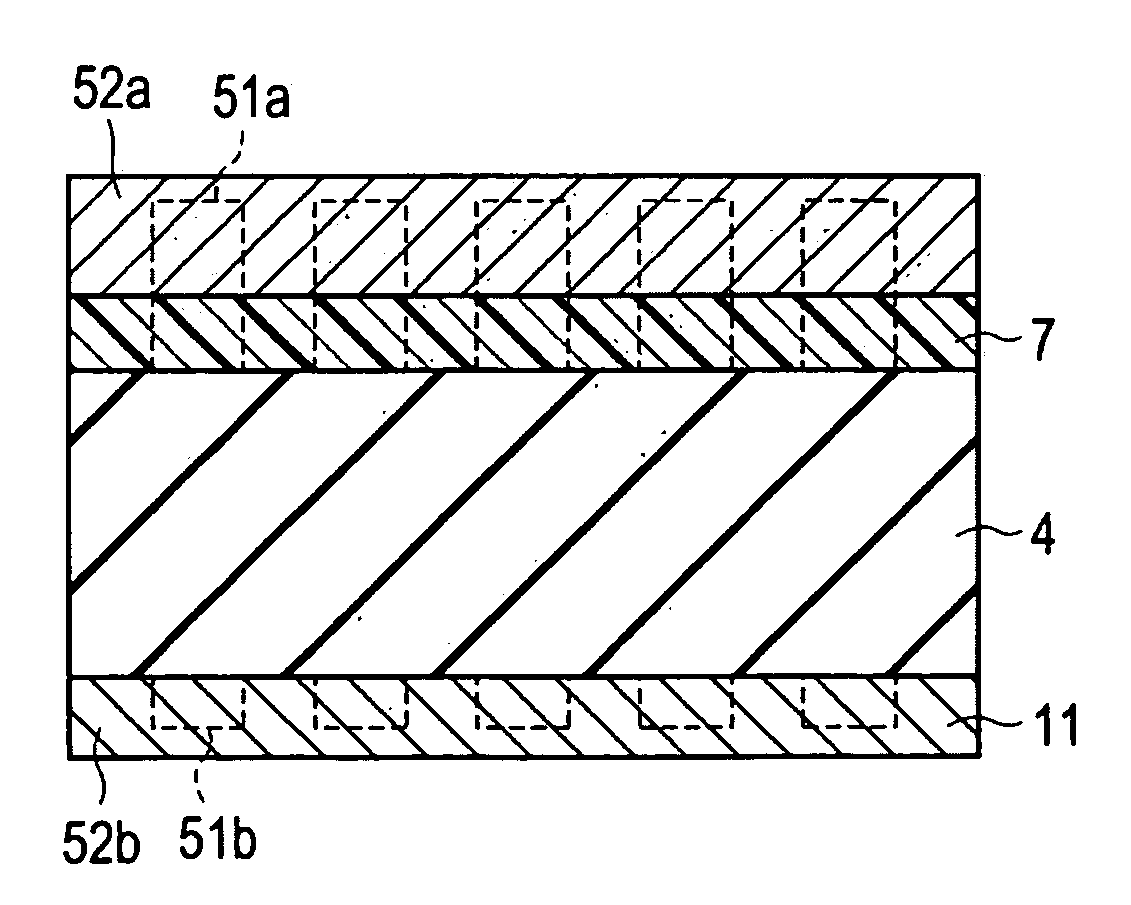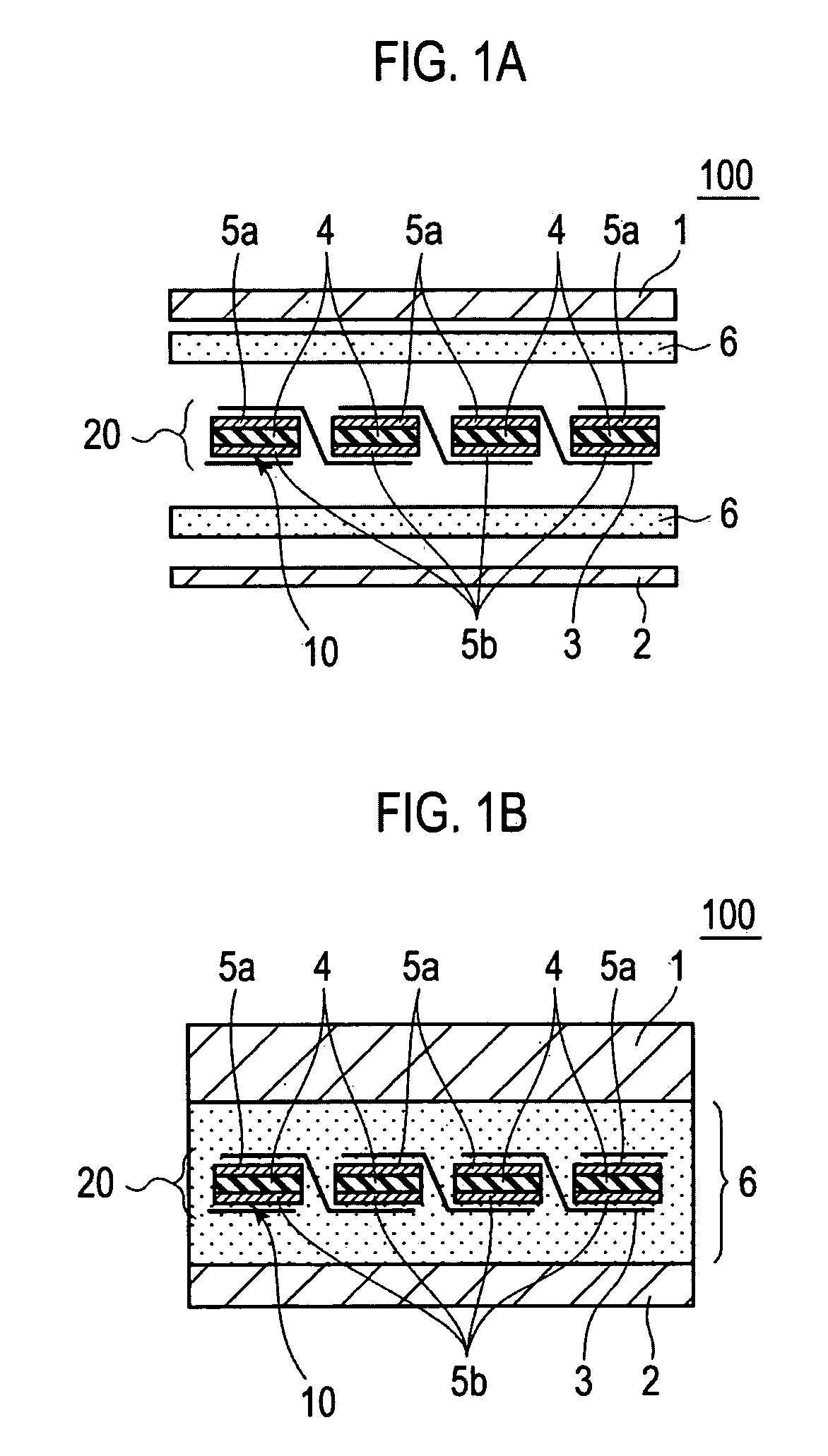Solar cell and solar cell module
a solar cell and solar cell technology, applied in the field of solar cell and solar cell modules, can solve the problems of easy cracks and brittle fractures inside such a collector electrode, and the collector electrode formed by the use of sintering conductive paste is not easily plastically deformed, and achieves the effect of improving reliability
- Summary
- Abstract
- Description
- Claims
- Application Information
AI Technical Summary
Benefits of technology
Problems solved by technology
Method used
Image
Examples
example 1
[0065]Next, concrete example of this embodiment is described. First, an n-type semiconductor layer is formed, by diffusing P with the thermal diffusion method, on an acceptance surface of a 125-mm square p-type polycrystalline silicon substrate. Moreover, a p+-type diffused layer is formed by diffusing Al with the thermal diffusion method, on a back surface side of the p-type polycrystalline silicon substrate. Next, a SiN film (the anti-reflective film) is formed, by a plasma CVD method, on an acceptance surface of the n-type semiconductor layer.
[0066]Then, silver paste is coated into a line shape, by the screen printing method, on the acceptance surface side of the SiN film, as well as on the back surface side on the p+-type diffused layer. The silver paste used therein is formed by blending: 70 wt % of silver powder having grain sizes of 1 μmφ; 5 wt % of PbO—B2O3-based glass frit; and 25 wt % of an organic vehicle prepared by dissolving ethylcellulose into terpineol. Meanwhile, as...
example 2
[0071]Here, different features from the manufacturing method of Example 1 is described.
[0072]In Example 2, thermosetting resin containing conductive particles is used as the conductive adhesive instead of the solder. To be more precise, the thermosetting resin having a width of 1.5 mm and a thickness of 20 μm is printed on the acceptance surface bus-bar electrodes and the back surface sub-bar electrodes with the screen sprinting method. The conductive adhesive is prepared by mixing fast curing epoxy resin with 5 wt % of silicone resin, and then by mixing 3 wt % of spherical Ni powder (grain sizes of 15 μmφ) therewith.
[0073]Next, a first end of each tab is disposed above the acceptance surface bus-bar electrode of a crystalline solar cell, while a second end thereof is disposed below the back surface bus-bar electrode of the adjacent crystalline solar cell. In the state of sandwiching the solar cells with the tabs, the tabs and the bus-bar electrodes are bonded together by pressurizi...
PUM
 Login to View More
Login to View More Abstract
Description
Claims
Application Information
 Login to View More
Login to View More - R&D
- Intellectual Property
- Life Sciences
- Materials
- Tech Scout
- Unparalleled Data Quality
- Higher Quality Content
- 60% Fewer Hallucinations
Browse by: Latest US Patents, China's latest patents, Technical Efficacy Thesaurus, Application Domain, Technology Topic, Popular Technical Reports.
© 2025 PatSnap. All rights reserved.Legal|Privacy policy|Modern Slavery Act Transparency Statement|Sitemap|About US| Contact US: help@patsnap.com



